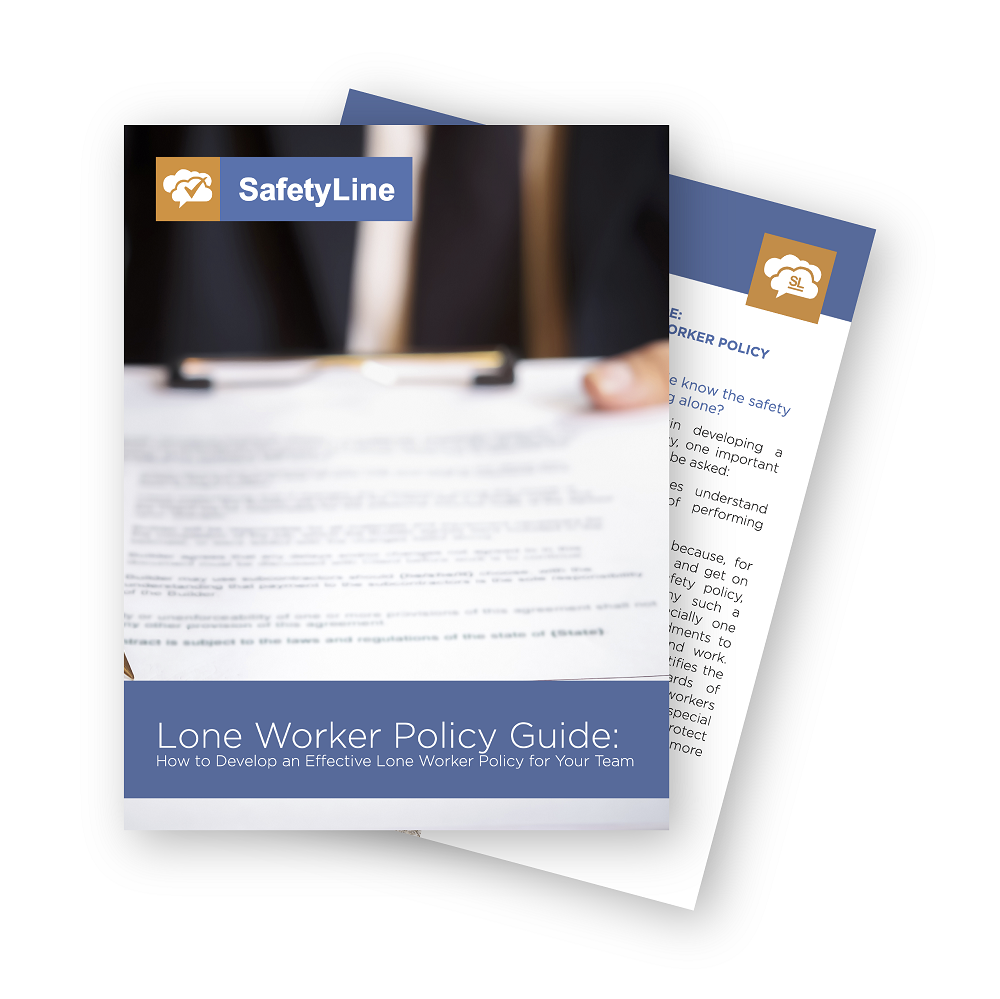Featured Resources
Lone Worker Policy Guide and Template
A lone worker policy is an effective way to ensure that your lone workers are well-educated on your company’s work-alone rules and have extensive knowledge of all workplace hazards that could be encountered on the job.
Hazard Assessment Guide
In the process of doing a hazard assessment for your workplace, it is almost a certainty you’ll learn information about the operational aspects of your organization you were unaware of before the assessment.
View eBook
Develop a Free Lone Worker Program for Small Teams
Developing a free lone worker check-in system is a simple process for small teams that any organization can implement.
View eBook
SafetyLine Blog Categories
General Safety | Lone Worker Safety | SafetyLine News and Updates | SafetyLine Product Updates | Compliance, Policy, and Regulations | Downloadable Resources |
Winter Driving Safety Tips from SafetyLine
Most places in North America are starting to experience the impact of winter, with cold temperatures, snow, and icy roads. Whether you’re driving with your family or for work, safe winter driving is a concern and a priority when the roads start to get slick and slippery. And whether you’re for personal reasons or your job, certain safety steps can be taken that can protect winter drivers in both scenarios, regardless of where you’re going.
Slips and Falls, Deadly Temperatures, Winter Driving – Address These Safety Hazards Now
As the temperatures plummet and the snow, ice and rain increase, slip and fall injuries see a spike, particularly for those working in these conditions. According to the US Bureau of Labor Statistics, in 2017, there were more than 20,000 work injuries related to ice, sleet and snow. The workers most at risk are obviously those working outside, facing the elements including farmers, fishermen, snow cleanup staff, first responders like paramedics, construction workers, security personnel, and community healthcare workers.
Slips, Trips, and Falls: The Number One Safety Hazard During Fall and Winter
As we approach the final month of a surreal year, the temperatures continue to plummet and depending on where you live, snow, sleet and rain will fall even harder. Here in rainy Pacific Northwest where SafetyLine’s headquarter is located, winter brings us increasingly wet streets, walkways, and surfaces, resulting in more injuries (some very serious) from slips, trips and falls at work, at home, and in public.
Cold Weather Safety for your Phone
Phones are more an essential part of many of our daily routines. For some of us, they’re essential tools we need to perform our jobs, and sometimes our only means of contact with anyone else.
How to Prepare Your Vehicle for Winter
As you prepare for winter weather, it’s important to also get your vehicle ready. Making sure that your vehicle is ready for the cold can be a critical safety issue. In this article, we look at how you can prepare your vehicle for winter driving.
6 Tips for Working Safe in Cold Weather
Working in cold conditions isn’t just uncomfortable, it can be dangerous. Frostbite, numbness, dehydration and hypothermia are real concerns from chilly outdoor weather. If you're working outdoors this winter, be aware of the dangers and stay safe. In this article, we're looking at 6 tips for staying safe in the cold.
5 Winter Weather Battery Tips
When it comes to planning for winter, we often overlook our electronic devices. As temperatures fall, the capacity of batteries decreases. If you're working outdoors, you need a plan to keep your devices running. If you unwrapped new technology these holidays, these tips will make sure that the winter weather doesn’t leave you out in the cold.
7 Tips on How to Deal with Black Ice
Road ice is slippery business, especially the kind you can’t see: Black ice. Despite the name, black ice is completely clear. Because black ice allows you to see the road, it can be difficult to know when it’s present. With winter just around the corner, it's important to know how to avoid the hazard of ice. In this article, we're looking at some tips to keep you safe when the temperature drops.
How to Prepare for Working Alone in the Cold
When you're working alone in the cold, it’s important to plan ahead and make sure you're prepared for anything. This week we’re looking at some of the ways that you can stay safe when you're working alone in cold weather.
Cold Weather Outfits: How to Dress for Cold Weather Work
When you’re dressing for cold weather, you need to find a balance between warmth and function. It’s also important that your clothing is up to the task. Standard PPE and work wear may not be enough, even in layers. In this article, we look at some of the ways that you can stay safe as you dress for cold weather work.
Top 5 Ways to Ensure a Safe Winter Workplace
According to the National Floor Safety Institute, compensation and medical costs associated with employee slip and falls is approximately $70 billion annually. So what measures can a facility manager take to steer clear of being a part of these statistics?














